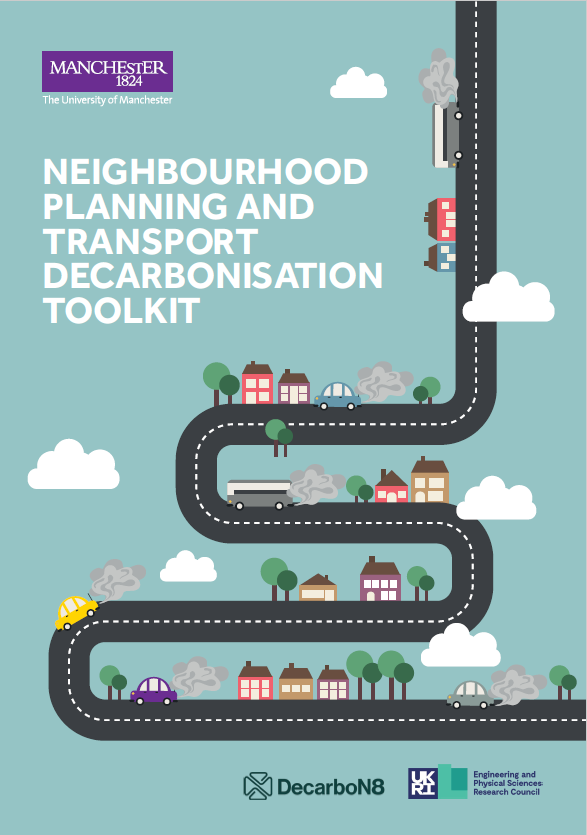Decarbonising Transport with Neighbourhood Plans in Northern England
Authors: Caglar Koksal and Mark Baker (2022)
PDF (9 pages, 0.5 MB)
This research explores the ways in which neighbourhood planning as a statutory development plan can offer place-based, community-led solutions to decarbonise local travel choices and transport infrastructure, using Carnforth, Lancashire, as a case study area.
Neighbourhood Planning and Transport Decarbonisation Toolkit
This toolkit is regularly updated to reflect the changes to the planning system and good practices across England.
Download the latest version of the toolkit
Key Findings
Since its introduction, neighbourhood planning has been proved to be very popular, with 288 neighbourhood planning areas designated and 1292 plans that have passed local referenda to become part of the statutory development plans for their local area. A recent study commissioned by MHCLG found that the climate emergency featured strongly in virtually all the plans they scanned, demonstrating communities’ willingness to tackle climate change from the bottom up. However, researchers also pointed out that many of these plans do not have a measurable and tangible action plan to deliver a lower carbon future; and much less a low carbon transport future.
This is a missed opportunity. Although most transport powers rest with the County Council or Unitary Authorities as the statutory local transport authorities, neighbourhood planning can help reduce the need for car journeys and enable people to make sustainable transport choices by influencing the location, scale, density, design and mix of land uses at the neighbourhood level. The thrust of neighbourhood planning as a tool to decarbonise local transport is that innovation, solutions and policies all come from the community and are then tested by all the residents through a local referendum. Therefore, in order to empower communities and to lead change to a just transition to lower carbon futures from the bottom up, it is crucial to identify practical ways of integrating sustainable transport policies into neighbourhood planning,
This research uses Carnforth, a small market town in Lancashire, as a pilot to explore the ways in which sustainable transport can be integrated into the development of a neighbourhood plan. It uses co-production and theory of change as methods to help create the conditions in which communities can identify practical ways to be empowered to integrate sustainable transport policies into their built environment and lifestyles and lead change to a just transition to lower carbon futures from a bottom up perspective.
The overarching consensus from this research is that the development of planning policies in a neighbourhood plan can contribute to the decarbonisation of local transport. With rapidly evolving technologies and new ideas, neighbourhood areas can act as testbeds where real change could be made. To help communities, the authors of this report have created a toolkit
to decarbonise local transport via neighbourhood plans, suggesting detailed strategies to adopt sustainable transport policies in neighbourhood plans and providing good practice examples.


